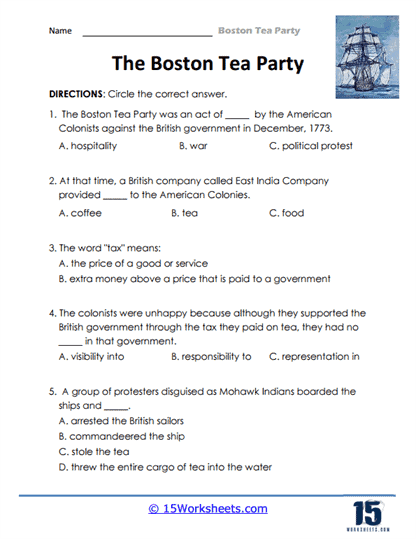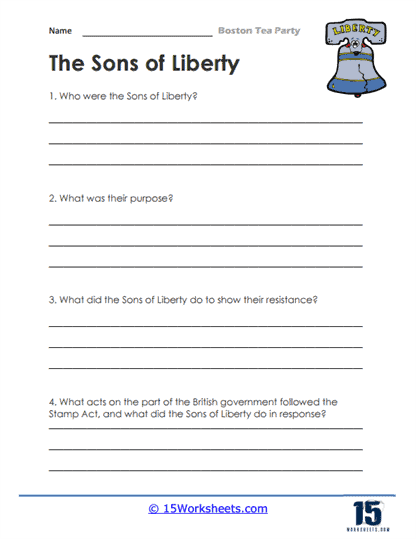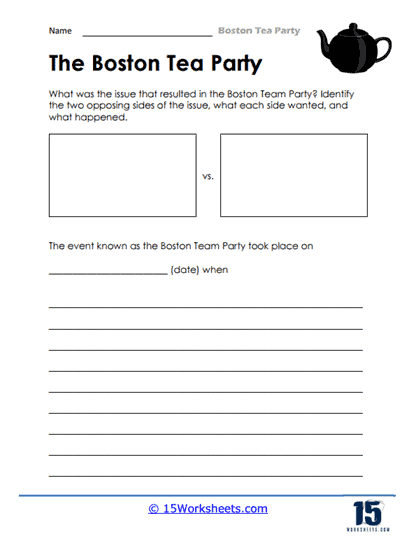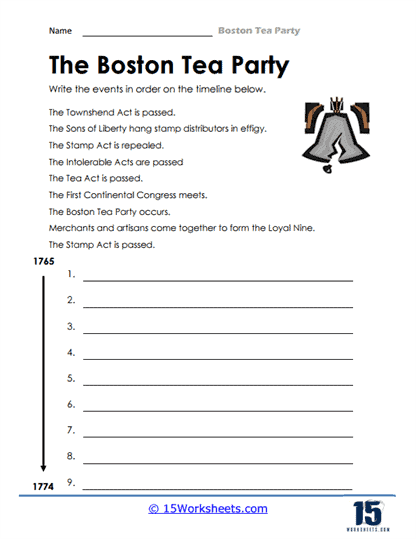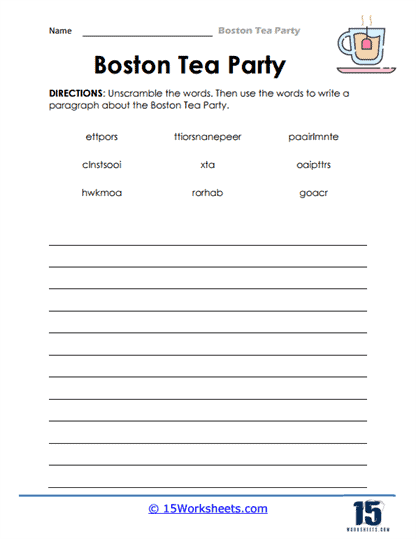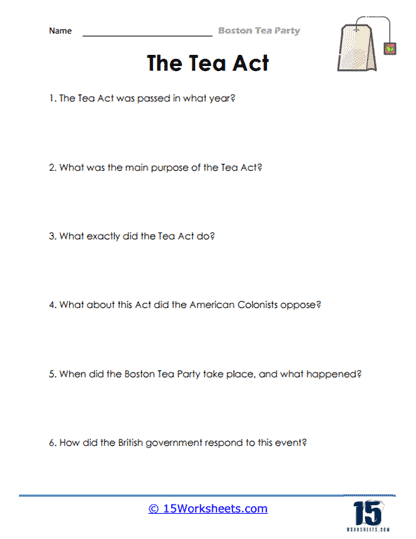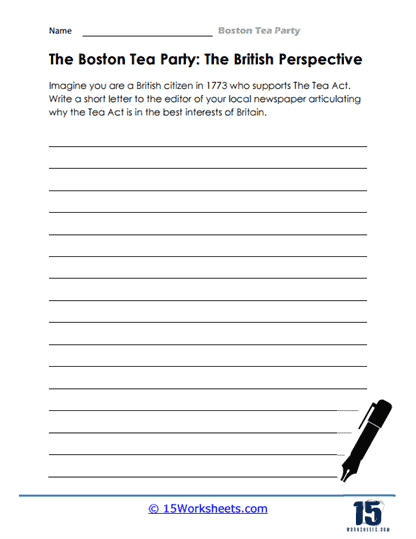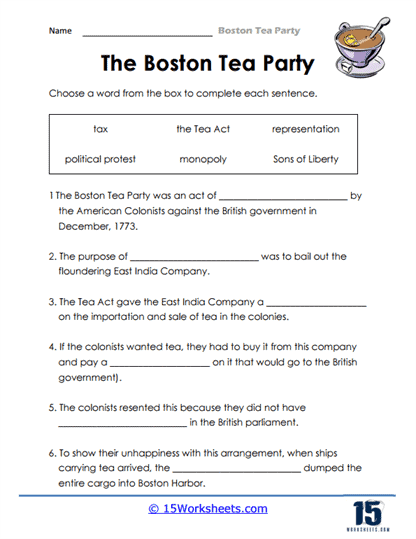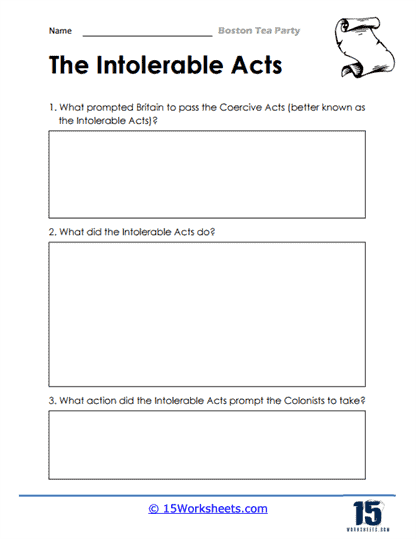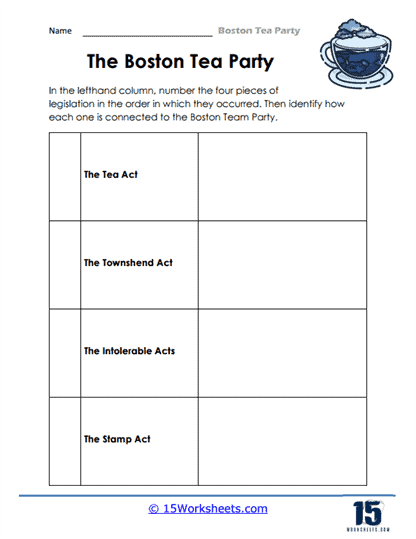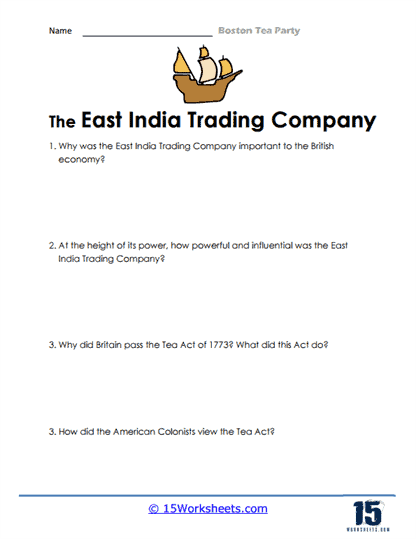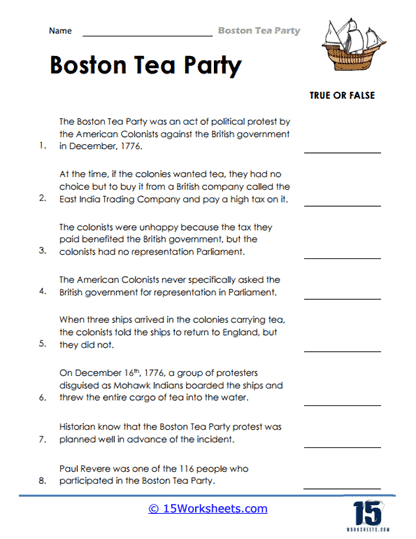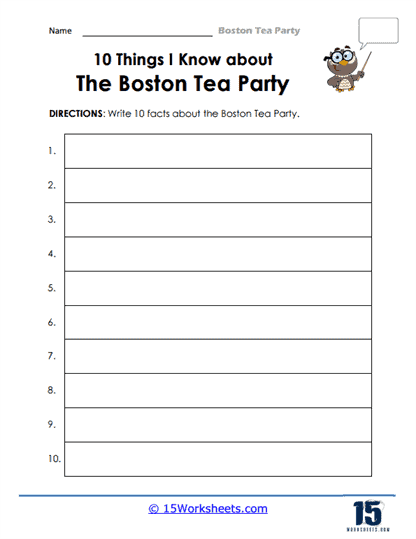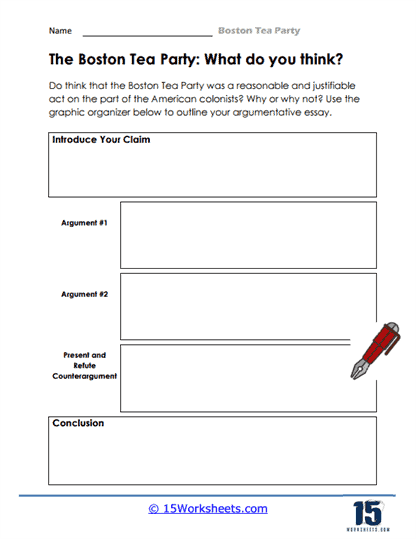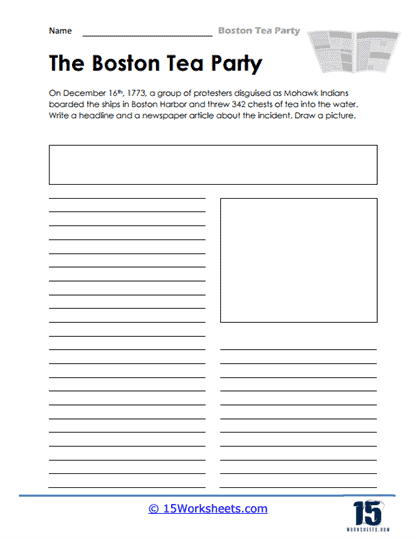Boston Tea Party Worksheets
All About These 15 Worksheets
Students are led back to a defining moment in American history, the Boston Tea Party, with this comprehensive series of 15 worksheets. This collection is designed to immerse them in the events, causes, and significance of the Boston Tea Party, a powerful act of protest that fueled the flames of revolution. Through creative activities and thought-provoking exercises, students will gain a deeper understanding of the colonial resistance to British taxation, the dramatic events of that night, and the far-reaching consequences for the fight for American independence. Through these worksheets, students will:
- Explore the historical context, the Tea Act, and the colonial response to British taxation, setting the stage for the iconic act of protest;
- Identify the goals of the opposing sides which sparked the Boston Tea Party;
- Write down the correct sequence of the key events;
- Showcase their vocabulary skills on terminologies related to the Boston Tea Party by unscrambling the letters in words and using them to describe what happened;
- Examine the motivations behind the Tea Act and analyze the colonists’ resistance, including the boycotts and the Sons of Liberty’s role in organizing the protest;
- Look at and beyond the different perspectives and reactions to the Boston Tea Party, and reflect on their own thoughts and opinions;
- Consider the immediate consequences, such as the Intolerable Acts, and the long-term effects on the relationship between Britain and the American colonies, culminating in the Revolutionary War;
- Utilize a graphic organizer to outline their own argumentative essay about their stand on whether what transpired was reasonable and justifiable;
- And create their own news headline and article, putting themselves in the shoes of someone who witnessed the Boston Tea Party.
Answering this series of worksheets will transport students back to the transformative moment of the Boston Tea Party, fostering a deep understanding of its historical significance, the motivations of the colonists, and its impact on the path to American independence. Through engaging activities and thought-provoking exercises, students will develop critical thinking skills, historical empathy, and a greater appreciation for the struggles and acts of protest that shaped the birth of a nation.
What was the Boston Tea Party?
The Boston Tea Party was a political protest that took place on December 16, 1773, in Boston, Massachusetts. A group of American colonists, led by members of the Sons of Liberty and disguised as Native Americans, boarded three British ships and dumped 342 chests of tea into Boston Harbor. This act of defiance was a response to the Tea Act, passed by the British Parliament earlier that year, and played a significant role in the events leading up to the American Revolution.
The Tea Act was designed to help the struggling British East India Company by allowing it to sell tea directly to the American colonies, bypassing colonial merchants and effectively granting the company a monopoly. Although the Tea Act actually lowered the price of tea for the colonists, it was met with resistance because it still included a tax imposed by the Townshend Acts. Many colonists viewed the Tea Act as another example of “taxation without representation,” further fueling resentment towards the British government.
How Did the Boston Tea Part Contribute Towards the American Revolution?
The Boston Tea Party contributed to the American Revolution in several ways:
- 1. Escalation of Tensions – The Boston Tea Party was a bold act of defiance against British authority and a direct challenge to the unpopular tax policies. This protest significantly escalated the already strained relationship between the colonists and the British government, setting the stage for further conflict.
- 2. British Responses – In response to the Boston Tea Party, the British government enacted a series of punitive measures known as the Coercive Acts (or Intolerable Acts) in 1774. These measures included the closure of Boston Harbor until the destroyed tea was paid for, the dissolution of the Massachusetts colonial assembly, and the imposition of military rule in Massachusetts. The Coercive Acts further outraged the colonists, who saw them as an infringement upon their rights and liberties, and united them in opposition to British rule.
- 3. Formation of the First Continental Congress – The harsh British response to the Boston Tea Party led the colonies to form the First Continental Congress in September 1774. This congress brought together representatives from twelve of the thirteen colonies (excluding Georgia) to discuss their grievances with the British government and coordinate a collective response. The First Continental Congress marked a critical step toward American unity and the eventual decision to seek independence from Britain.
- 4. Radicalization of the Colonial Population – The Boston Tea Party and its aftermath helped to radicalize many colonists, who began to see the struggle for their rights as a larger fight for independence. The event and the British response to it were widely publicized, igniting passionate debates and inspiring a new generation of patriots who would go on to lead the fight for American independence.
In summary, the Boston Tea Party was a significant event that contributed to the American Revolution by escalating tensions between the American colonies and the British government, prompting harsh British reprisals that further united the colonies, leading to the formation of the First Continental Congress, and radicalizing the colonial population. These factors combined to create an environment ripe for revolution and the eventual birth of the United States.

